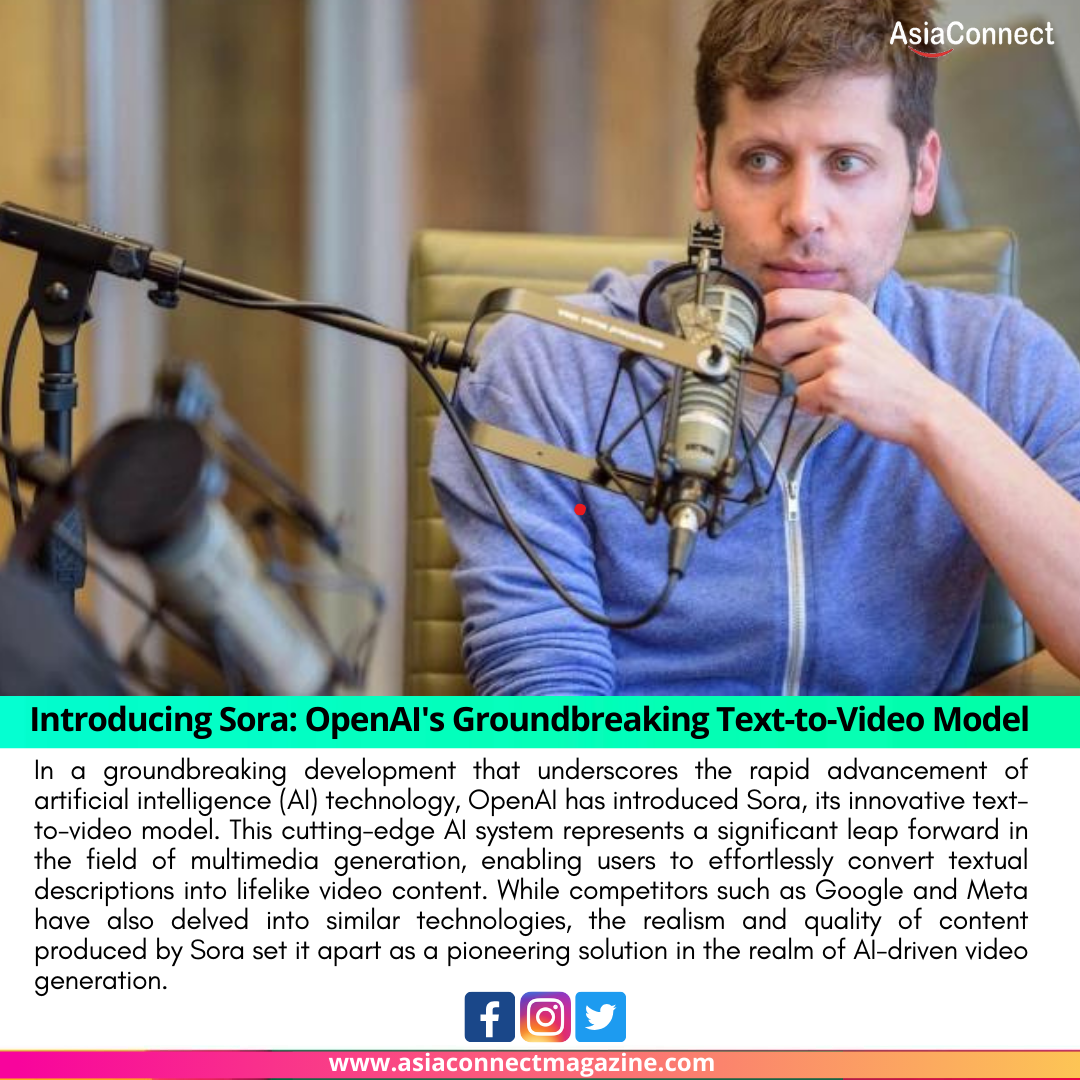In a groundbreaking development that underscores the rapid advancement of artificial intelligence (AI) technology, OpenAI has introduced Sora, its innovative text-to-video model. This cutting-edge AI system represents a significant leap forward in the field of multimedia generation, enabling users to effortlessly convert textual descriptions into lifelike video content. While competitors such as Google and Meta have also delved into similar technologies, the realism and quality of content produced by Sora set it apart as a pioneering solution in the realm of AI-driven video generation.
Sora represents the culmination of years of research and development by OpenAI’s team of experts in the fields of machine learning and natural language processing. Leveraging state-of-the-art AI algorithms and advanced neural network architectures, Sora is capable of understanding and interpreting textual descriptions with remarkable accuracy and nuance. By harnessing the power of deep learning, Sora can generate high-fidelity video content that closely aligns with the semantic meaning and context of the input text.
One of the key distinguishing features of Sora is its ability to produce video content that exhibits a remarkable degree of realism and coherence. Unlike earlier text-to-video models, which often struggled to generate visually convincing scenes, Sora excels at capturing intricate details and nuances, resulting in videos that closely resemble real-world footage. This enhanced realism opens up a wide range of applications across various industries, from entertainment and advertising to education and virtual reality.
Moreover, Sora’s advanced capabilities extend beyond mere video generation, encompassing aspects such as scene composition, camera movement, and object interaction. By intelligently synthesizing visual elements and dynamics based on textual inputs, Sora can create dynamic and engaging video content that effectively communicates complex ideas and narratives. Whether it’s depicting a scenic landscape, illustrating a scientific concept, or simulating a virtual environment, Sora offers unparalleled versatility and creativity in multimedia production.
The introduction of Sora by OpenAI marks a significant milestone in the evolution of AI-driven content generation and communication. As the demand for multimedia content continues to rise in an increasingly digital world, Sora presents a powerful tool for content creators, marketers, educators, and storytellers alike. With its ability to streamline the video production process and unlock new possibilities for creative expression, Sora has the potential to revolutionize the way we create, consume, and interact with visual media.
While competitors like Google and Meta have also ventured into the realm of text-to-video technology, the unique capabilities of Sora set it apart as a leader in the field. Through rigorous research and innovation, OpenAI has succeeded in pushing the boundaries of what is possible with AI-driven video generation, delivering results that surpass existing benchmarks in terms of realism, quality, and expressiveness. As a result, Sora is poised to become the go-to solution for anyone seeking to harness the power of AI to create captivating and immersive video content.
Looking ahead, the introduction of Sora promises to catalyze further advancements in AI-driven multimedia generation and communication. As researchers continue to refine and optimize the capabilities of text-to-video models, we can expect to see even greater strides in areas such as realism, interactivity, and personalization. Ultimately, Sora represents not just a technological achievement, but a glimpse into the future of AI-enabled creativity and expression in the digital age.





